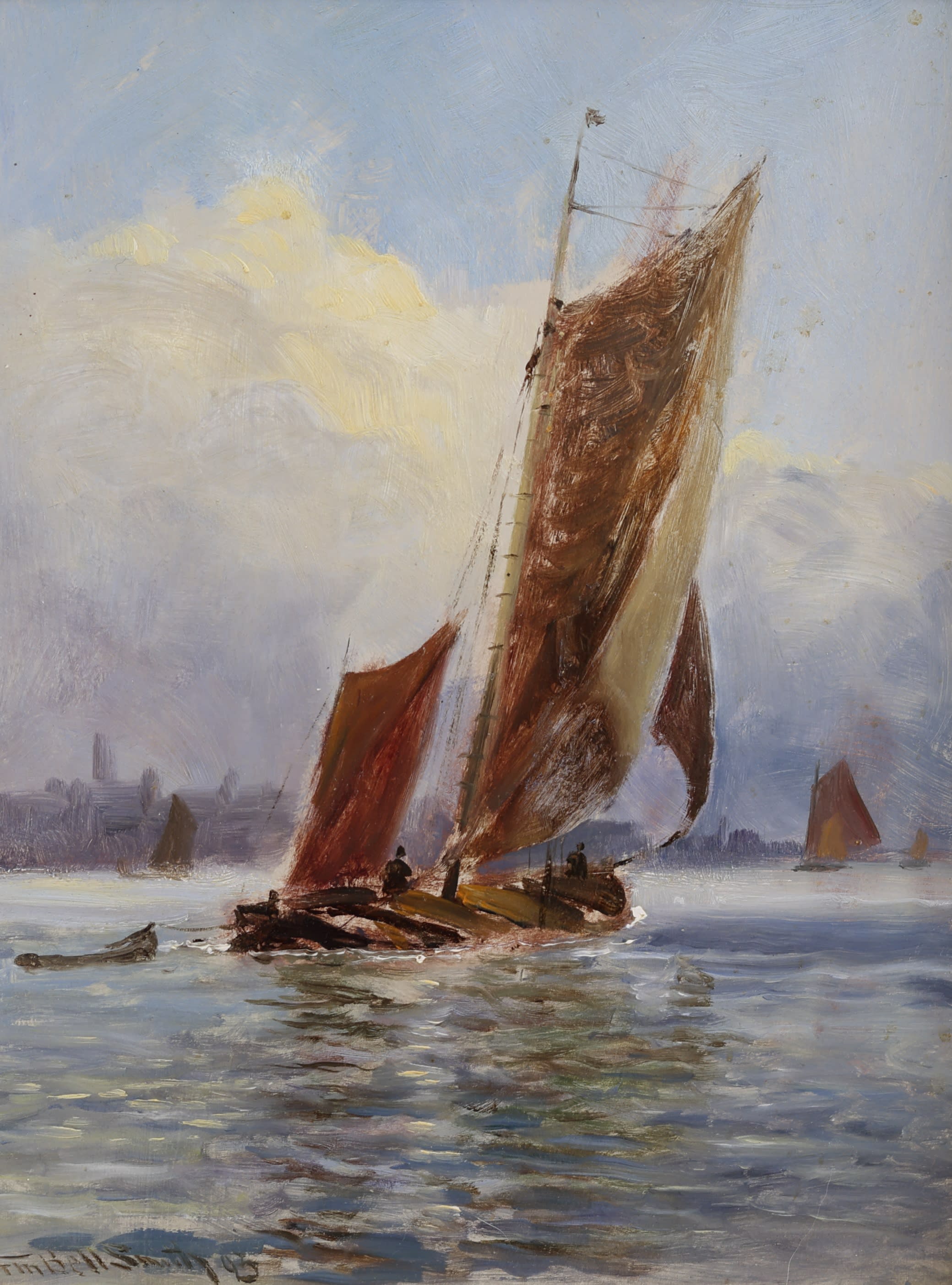“Our Land, Sir, is indeed Fair: Fair to look upon and good to dwell within. Fair are her boundless fields of fruitful grain, her wooded slopes and mountain heights with shining glaciers crowned; deep and exhaustless our mines and vast our forest store; her inland seas and mighty streams bear our commerce oceanward; rich in historic colouring, and picturesque in the remanent of a past day and race, she supplies the sculptor and painter with unlimited material for the exercise of their artistic skill, and our Country is ripe for the development of a distinctly Canadian Art, which if intelligently recognized should result in master-works comparable with those of older Lands.”
Frederic Marlett Bell-Smith, 1904
Frederic Marlett Bell-Smith (September 26, 1846 – June 23, 1923) was a Canadian artist known for his paintings, watercolours, and illustrations. Born in London, England, Bell-Smith emigrated to Canada in 1866, settling in Montreal. He received artistic training at the South Kensington School of Art in London and studied under notable artists such as E.J. Dupain, T.A. Harrison, and Gustav Courtois in Paris.

Frederic Marlett Bell-Smith; Sailing, 1893
Bell-Smith's career spanned various locations and roles. He co-founded the Society of Canadian Artists in 1867 with his father, John Bell-Smith, and became a prominent member of the Royal Canadian Academy of Arts. Throughout the late 1800s, he taught art classes in different cities, including London, Ontario, and served as the Art Director of Alma College in St. Thomas, Ontario. He also directed the Toronto Art School in 1889 and later studied at the Académie Colarossi in Paris in 1896.
Known for his depictions of Canadian landscapes, Bell-Smith's paintings often captured the natural beauty of the Rocky Mountains and the Selkirk Range. He gained recognition for his conservative yet popular style, which appealed to audiences in both eastern Canada and Britain. His travels and experiences in the Canadian west, particularly around Lake Louise, influenced his advocacy for a uniquely Canadian school of art, inspiring future artists such as Tom Thomson, Emily Carr, and the Group of Seven.
Bell-Smith's artistic versatility extended beyond landscapes to include scenes of late Victorian and Edwardian eastern Canada and Britain. Notably, he painted "Lights of a City Street," a playful portrayal of Toronto's Yonge and King Streets in 1894, featuring himself, his son, and a local constable.

Frederic Marlett Bell-Smith; Town By the River
One of Bell-Smith's remarkable achievements was negotiating a sitting with Queen Victoria for a series of paintings related to the death of Prime Minister Sir John Thompson in 1894. Despite initial challenges, he secured a sitting that lasted over an hour, during which Queen Victoria permitted him to position her as he wished, demonstrating his influence and popularity in Britain.
Bell-Smith's contributions to the Canadian art scene were significant, as evidenced by his founding membership in the Royal Canadian Academy of Arts and other artistic societies. His works are held in numerous public and private collections, including the National Gallery of Canada, the Art Gallery of Ontario, and the Montreal Museum of Fine Arts.

Frederic Marlett Bell-Smith; Westminster Abbey
Bell-Smith was also involved with the Railroad Painters, a group of artists hired by the Canadian Pacific Railroad to record the construction of the railroad through the Canadian Rockies. Additionally, specific exhibitions where Bell-Smith's work was displayed included the National Gallery of Canada, the Art Gallery of Ontario, and the Montreal Museum of Fine Arts.
Overall, Frederic Marlett Bell-Smith's life and legacy are characterized by his remarkable artistic achievements, his influence on Canadian art, and his diverse range of talents and interests, making him a significant figure in Canadian cultural history.
Anthony R. Westbridge, The Collector's Dictionary of Canadian Artists at Auction- Volume I: A-F (Vancouver, B.C.: Westbridge Publications Ltd., 1999), 27.
Roger Boulet, Frederic Martlett Bell-Smith: 1846- 1923 (Victoria, BC: Art Gallery of Greater Victoria, 1977).







